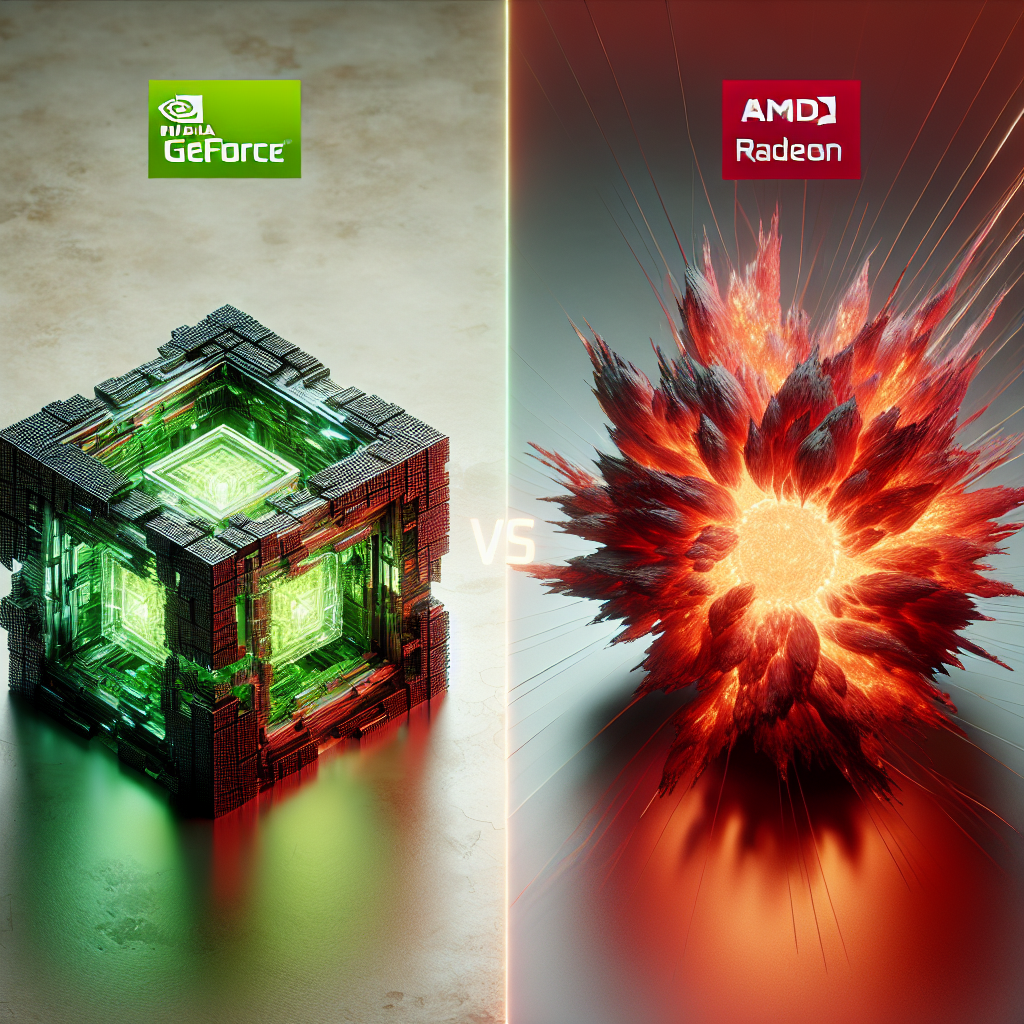Your cart is currently empty!
NVIDIA GeForce vs. AMD Radeon: A Head-to-Head Comparison

When it comes to choosing a graphics card for your gaming or content creation needs, two of the biggest players in the market are NVIDIA GeForce and AMD Radeon. Both companies offer a range of GPUs with varying levels of performance and features, making it difficult to decide which one is the best option for you. In this article, we will compare NVIDIA GeForce and AMD Radeon in a head-to-head battle to help you make an informed decision.
Performance
When it comes to raw performance, NVIDIA GeForce GPUs have traditionally been considered the top choice for gamers and professionals alike. NVIDIA’s GPUs are known for their superior gaming performance, thanks to features like ray tracing and DLSS (Deep Learning Super Sampling) that enhance graphics quality and frame rates. NVIDIA’s flagship RTX series of GPUs are among the most powerful on the market, offering unrivaled performance for high-end gaming and content creation tasks.
On the other hand, AMD Radeon GPUs have made significant strides in recent years, with the introduction of their RDNA 2 architecture. AMD’s latest GPUs, such as the Radeon RX 6000 series, offer competitive performance with NVIDIA’s offerings, making them a viable alternative for gamers and professionals on a budget. AMD’s GPUs also support features like ray tracing and FidelityFX, which enhance graphics quality and performance in supported games.
Features
In terms of features, both NVIDIA GeForce and AMD Radeon offer a range of technologies to enhance gaming and content creation experiences. NVIDIA’s GPUs come with features like NVIDIA Reflex, which reduces input lag in games, and NVIDIA Broadcast, which enhances livestreaming and video conferencing quality. NVIDIA also offers technologies like G-Sync, which eliminates screen tearing and stuttering for smoother gameplay.
AMD’s GPUs, on the other hand, come with features like AMD Radeon Anti-Lag, which reduces input lag in games, and AMD Radeon Boost, which dynamically adjusts resolution to improve performance in fast-paced games. AMD also offers technologies like FreeSync, which eliminates screen tearing and stuttering for a smoother gaming experience.
Price
When it comes to price, AMD Radeon GPUs are generally considered to be more affordable than NVIDIA GeForce GPUs. AMD’s GPUs offer competitive performance at lower price points, making them a popular choice for budget-conscious gamers and professionals. NVIDIA’s GPUs, on the other hand, are typically more expensive, especially for their high-end models like the RTX 3090.
Ultimately, the choice between NVIDIA GeForce and AMD Radeon comes down to your specific needs and budget. If you are looking for the best gaming performance and can afford to spend a bit more, NVIDIA GeForce is the way to go. However, if you are on a budget and still want competitive performance, AMD Radeon is a solid choice. Whichever option you choose, both NVIDIA and AMD offer a range of GPUs to suit your needs.

Leave a Reply